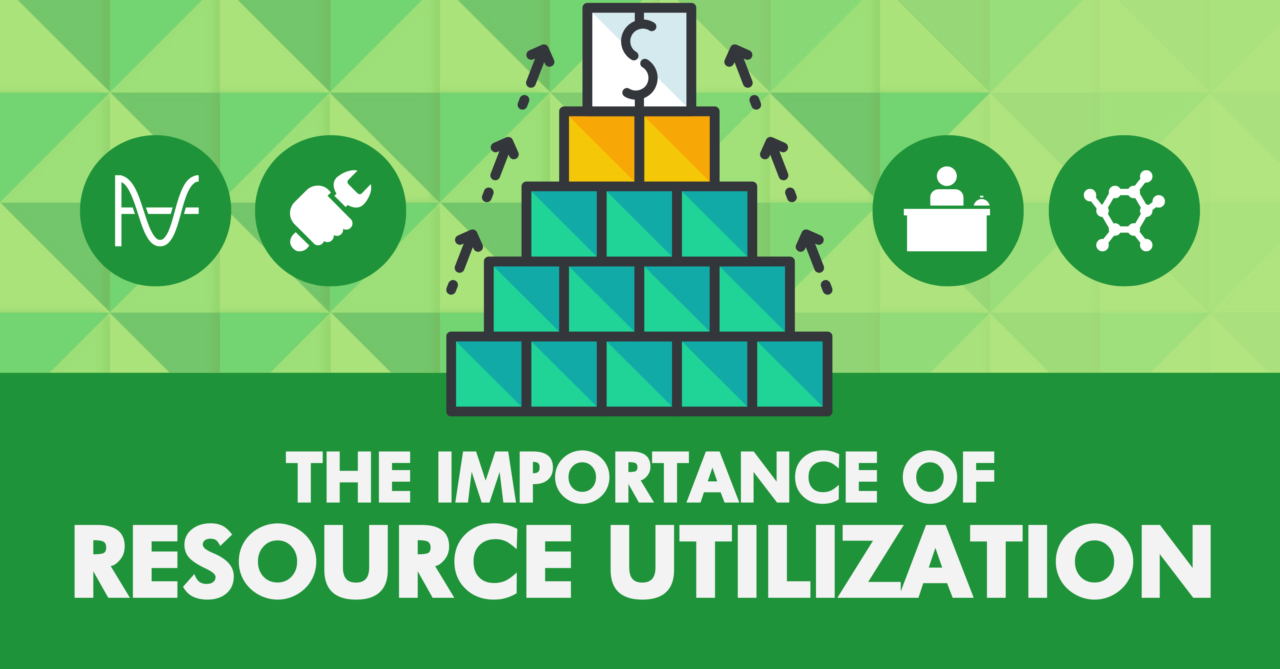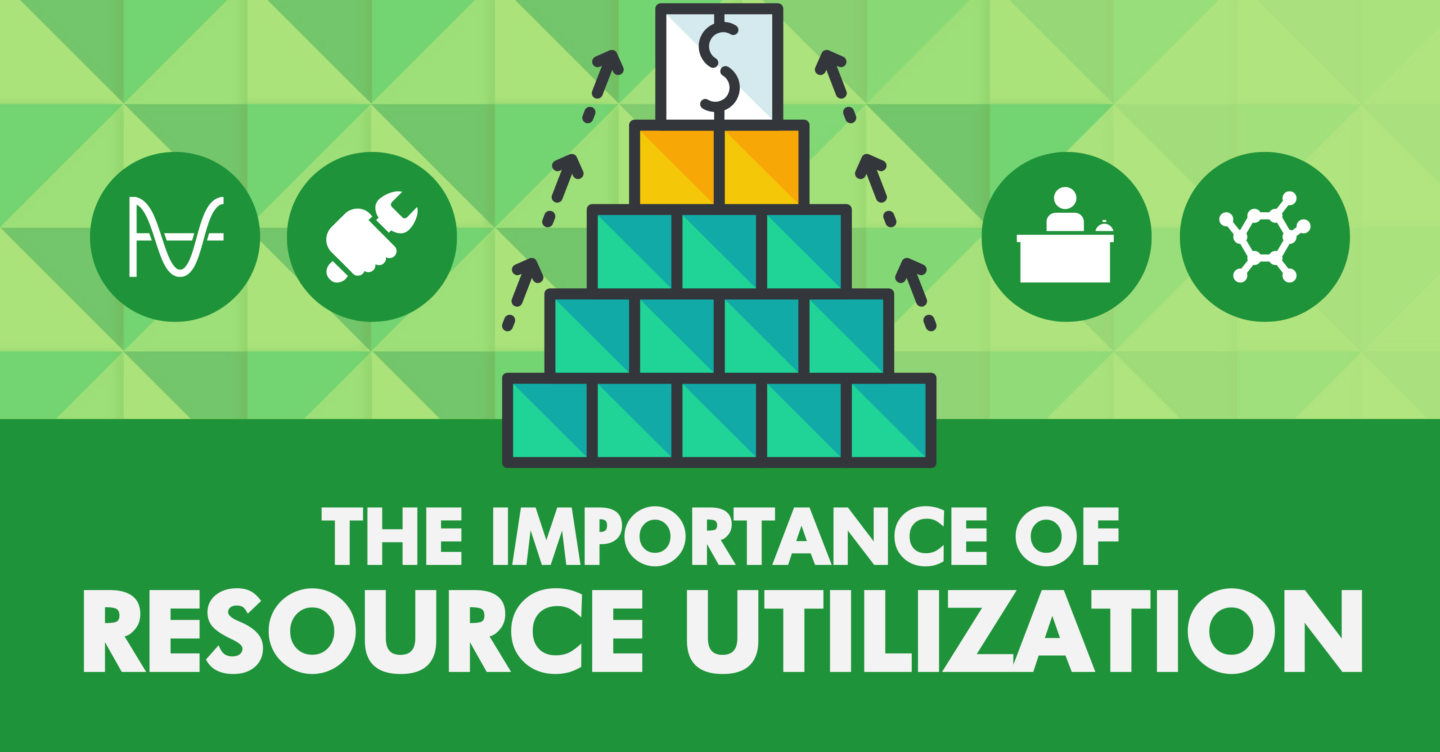
The Importance of Resource Utilization
Project managers have no shortage of responsibilities and duties, one of which is to track resource utilization. Project managers oversee countless moving parts of an organizational project and are responsible for making decisions both in advance and on the spot. One of their principle duties is to allocate duties and responsibilities among a workforce in order to reach project success on time and within a set budget. They aim to keep every individual busy, while also ensuring their tasks are valuable and billable for the company.
The importance of resource allocation is not lost on most organizations, but how can you go about ensuring your allocation efforts are successful in the first place? Allocation can get tricky as your team grows and you are forced to assign multiple employees to multiple projects at the same time. And, because of the shapeshifting nature of projects themselves, even the most skilled project manager can still oversee projects that don’t live up to expectations if tools aren’t being leveraged in the right way. One of the best ways to measure your allocation success and ensure all a project’s available resources are being used properly, is to track your team’s resource utilization.
What is Resource Utilization?
Resource utilization refers to the metric that indicates whether your whole team, or individual employees, are fully booked. It describes the process of planning a project and ensuring the available resources in the company are being used to their highest potential. It helps project managers identify which of their employees are being overutilized so they can allocate responsibilities to someone else if needed, and can also assist in identifying the people who are underutilized, so they can assign new projects to them.
Resource Allocation vs. Resource Utilization
While the purpose of both processes may seem similar, there are some key distinctions to be drawn between the two:
- Resource allocation refers to a project manager selecting suitable employees for a project, and then managing them as they complete the project, reassigning or altering workloads if necessary.
- Resource utilization is the process of strategically measuring how effective resources are. Allocation organizes a project, but it is utilization that makes it successful.
The Benefits of Resource Utilization
Creating a robust framework for assessing the quality of your resources is a critical step for project success. Some of the specific advantages that resource utilization can offer your projects include:
- Effective utilization of resources maintains productivity, since employees are not underperforming or being overburdened by their workloads,
- Resource utilization allows for projects to be managed with better visibility, meaning the risk of oversights is reduced drastically,
- The use of resources to their maximum potential yield a better ROI for projects,
- Resource utilization metrics ensure specific resources aren’t being over- or under-utilized, and;
- They allow project managers to be agile and reschedule resources as quickly as possible, avoiding problems coming up or worsening.
How to Implement Resource Utilization
Your project’s resource utilization metric is usually calculated using the following formula, referred to as the full-time equivalent (FTE):

This value indicates how much of your team’s time is spent working, allowing you to allocate project tasks accordingly. It is best to aim for a rate of around 80% – anything higher risks employee burn out, and anything lower means the resource is not being utilized properly.
Although the FTE calculation is straightforward, there are a few variables that will need to be worked out before you can actually implement a resource utilization strategy into your project management. One of the biggest questions PMs have is whether they should base their calculation on actual working time from timesheets, or use planned working time instead. The variance in outcomes is what makes it difficult to recommend one universal strategy for resource utilization. The best way to determine how to implement it is to examine both versions of the formula and figure out which approach is best for your organization. Let’s break it down:
Comparing Booked Hours with Team Availability
One way to measure resource utilization is to compare a resource’s availability against their planned working hours:

The primary reason some organizations use this method is that it presents the opportunity to optimize plans if the score comes out too low. They can still return to their schedule and rearrange their project plans to optimize their resource utilization. Perhaps there are some gaps in resource bookings, or there are working hours being divided when it may be more effective to assign them to one person full-time.
If you are going to use this method, ensure you have a strategy for how you can fill in the gaps in your team’s schedule. Not only will a better plotted out working schedule avoid lost productivity, it also keeps employees much more engaged. On the other hand, you should also keep an eye out for employees who have too much on their plate. If an employee is being overutilized, the risk for their tasks not being delivered on time goes up, and they are much more likely to burn out. If overbookings are rampant in your scheduling, this may suggest the need to bring in new employees to the project.
Comparing Worked Hours with Team Availability
Another way you can measure resource utilization is to compare recorded hours (timesheets) against your team’s available hours:

Most organizations believe that this is the most precise way to calculate resource utilization, since you are operating on actual working hours and not just the estimates. Since this metric is retrospective, any identified flaws cannot be undone. However, it can still be leveraged to help make better decisions for resource utilization in the future. Historical data regarding resource utilization can help project managers assess whether additional team members need to be hired, or whether extra assignments need to be given to existing ones. It also allows for an analysis on your team’s general productivity trends.
While both methods are useful in their own ways, one of the best ways to glean the most from your resource utilization metrics is to employ both equations. Compare your recorded utilization metrics to your estimated ones and analyze the differences. This could highlight issues in workload estimation and can also bring attention to existing project management problems. Identify whether there are specific employees who are consistently over or under their estimated resource utilization score. By analyzing both metrics, and the gaps between the two, it becomes much easier to spot improvement areas and take action to ameliorate your project management processes.
Other Tips for Implementing Resource Utilization
When a company has a robust resource management platform, project managers have access to the tools needed to approach and master effective resource utilization. Some key tips to keep in mind include:
- Leverage Visibility – especially for larger companies, several projects may be running at the same time, and while they exist separately they still affect one another down the line. Rather than looking at projects as separate entities, formulate a resource utilization plan that can provide insight into project-specific metrics, as well as an overview of all resources in the company. This way, you will be able to assess overall work capacity and resource performance on a bigger picture scale, helping identify any company-wide areas of improvement.
- Beware of Scope Creep – projects are shapeshifting by nature, so some will inevitably demand additional time and resources. It is the responsibility of the project manager to ensure projects don’t go over allotted time or budget. A resource utilization strategy can help centralize all active projects, leveraging resources equally amongst them to help keep things within their optimal scope.
- Always Be Prepared – as a project manager, you need to be prepared for any and all scenarios. During your planning process, visualize and run through various situations that could arise, and prepare for a change of circumstances as if it were inevitable. This way, if the budget changes, or a resource is lost, your team will be able to adapt more quickly.
Measuring Resource Utilization in Real-Time using SpriggHR
You may have optimized your resource utilization formula to accommodate the needs of your business, but team data is everchanging and your project management strategy needs to be equipped for that. Employee’s future availability will be changing constantly, which can affect your booked hours. Unforeseen circumstances may cause one employee to fall short of the workload they should be performing, impacting the metrics entirely.
Updating your data regularly and monitoring your resource utilization score constantly is an essential business practice. One of the best ways to do so is to implement a resource management software. SpriggHR offers several features that can help you automate the steps needed to calculate your resource utilization score, allowing you to stay focused on your project management duties. Tracking progress on goal completion is critical to understanding status of project completion and projected results. Project managers need a tool that works as hard as they do. SpriggHR can provide you with the resource utilization insights your company needs to guarantee sustained project success.




